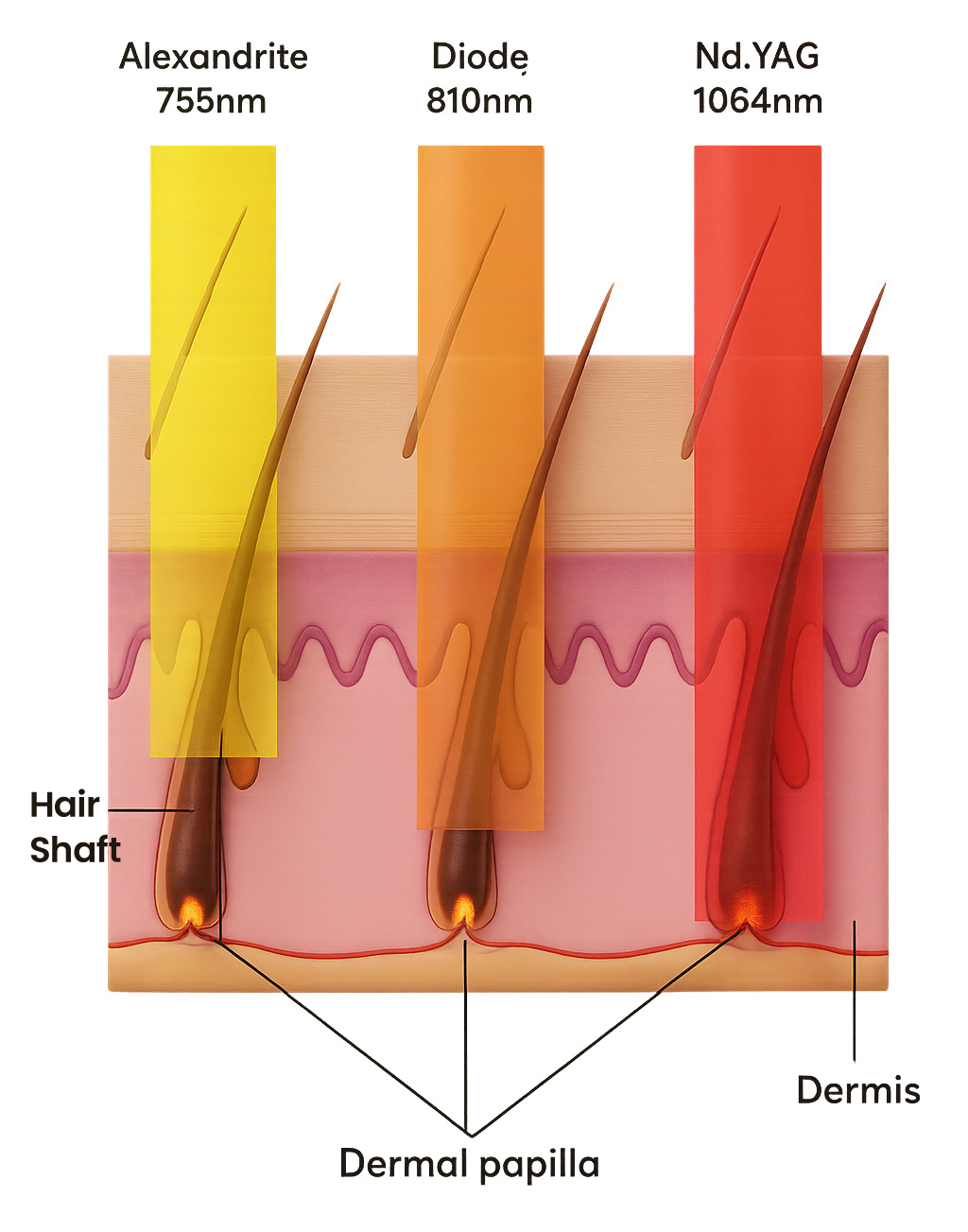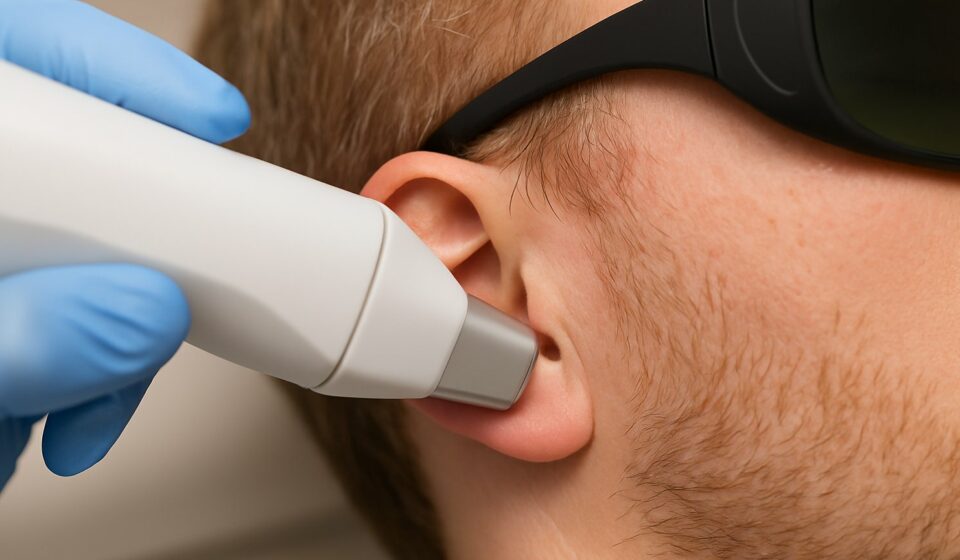Ear hair can be managed in minutes with modern laser treatment, giving tidy edges and longer gaps between regrowth. If trimming every week is turning into a chore, a short course of laser offers a clean, discreet alternative that actually lasts.
Table Of Content
What counts as ear hair, and what is treated
- Treatable zones: the outer ear only, such as the helix, anti helix, tragus, lobule, and the rim just outside the canal. Clinics work on visible hairs that sit on the surface.
- Not treated: inside the ear canal or on the eardrum. That area is off limits for safety.
- Protection and control: goggles for the client and practitioner are mandatory, and many clinics place a soft barrier at the canal entrance for clarity and comfort.
- Regulation in England: a licensing scheme for non surgical cosmetic procedures is being introduced, per GOV.UK. If you are opening a service, our Laser Protection Advisor support can help with compliance.
01. Your options side by side
| Method | Pros | Cons | Best for |
|---|---|---|---|
| Trimming or scissors | Fast, cheap, no downtime | Frequent upkeep, uneven edges | Quick tidy ups |
| Waxing | Smooth finish, lasts longer than trimming | Sting, risk of irritation, regrowth required between visits | Occasional grooming |
| Depilatory creams | Easy at home, low cost | Chemical irritation risk, smell, patch tests needed | Short term smoothing |
| Laser hair removal | Long lasting reduction, crisp edges, fewer ingrowns | Course of sessions needed, clinic visit required | Sustained neatness |
Why laser suits the ear area
- Precision on small curves: modern handpieces have compact tips that reach awkward rims safely and neatly.
- Fewer ingrowns and bumps: by disabling growth cells, laser reduces coarse regrowth that causes prickle and irritation.
- All skin tones covered: with the right wavelength and cooling, types I through VI can be treated. Nd YAG at 1064 nanometres is preferred for deeper tones.
- Short sessions: both ears are usually finished in ten minutes or less.
- Typical effects: brief pinkness or warmth which settles quickly. Common mild effects are listed on Wikipedia.

How a session works, and typical pricing
- Consult and test: your practitioner confirms skin type, hair colour and density, then performs a small test to set safe energy.
- Preparation: hairs are shaved flush with the skin. No waxing or epilating during a course, you need the root present.
- Treatment: short light pulses sweep the ear rim and lobule with cooling. Sensation is a quick snap that fades instantly.
- Time and count: most people need six sessions, spaced four to six weeks. Top ups now and then keep things tidy long term.
Guide price in the UK for outer ears tends to sit around £50 to £80 for a single visit, with course prices near £250 to £360 for six sessions at many clinics. For a wider view on pricing across areas, see our guide to laser hair removal costs.
02. Pre care and aftercare that matter
- Before: avoid sun and sunbeds for two weeks, let self tan fade. Shave the area the day before. Arrive with clean skin and no fragrance.
- Between sessions: shave only. Do not pluck or wax, since that removes the root the laser needs.
- After: cool if needed, keep the area dry and clean for twenty four hours, avoid hot showers and intense exercise for a day, and use SPF if exposed.
The kit that makes ear work easy
Clinics get the best ear results with three wavelength platforms and small, accurate tips that hug the ear contours. Our systems combine Alexandrite, Diode, and Nd YAG in one unit which means every client can be matched to the right settings.
- Nu TriLaze Plus: three in one with a built in skin analyser, HD detection, and interchangeable tips for detail areas like the ear. See Nu TriLaze Plus.
- Nu eRays Plus: precise handpiece controls and strong cooling for quick, comfortable passes. Explore Nu eRays Plus.
- Nu TriLaze Lite: compact and mobile friendly with very low running cost, ideal for multi room setups. View Nu TriLaze Lite.
Compare all systems here: laser hair removal machines.
03. For clinic owners: quick setup and compliance
- Training included: free online or face to face training with certification to support insurance and council checks.
- Rapid support: if a unit cannot be fixed on site, we dispatch a replacement quickly which keeps your diary moving.
- Next steps: book a demo in Coventry or virtually, or request details for finance and ROI packs.
Key takeaways
- Best suited area: the visible outer ear where crisp edges matter. The canal is not treated.
- Why choose laser: accurate, fast, and long lasting reduction with fewer ingrowns than waxing or trimming.
- Safety and comfort: proper wavelength choice and cooling keep sessions brief and gentle. For a plain language overview of the science, see the Mayo Clinic page.
Dr Majid Zarandouz
Majid holds a PhD in organic chemistry and has been working with laser systems for decades. His career began in the mid-1990s, when he started researching and developing laser-based technologies for medical and cosmetic applications. Over the years, he has combined scientific expertise with practical engineering to design machines that are effective, durable, and straightforward to use in real clinic settings. As director of the British Institute of Lasers, Majid continues to focus on producing equipment that meets professional standards while remaining accessible to businesses of all sizes.

